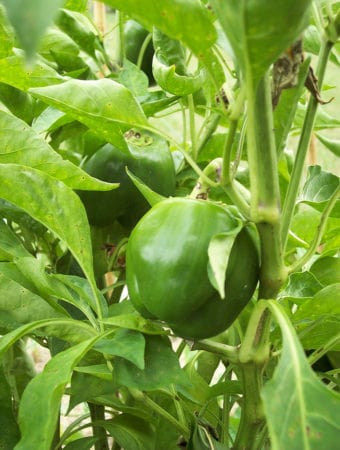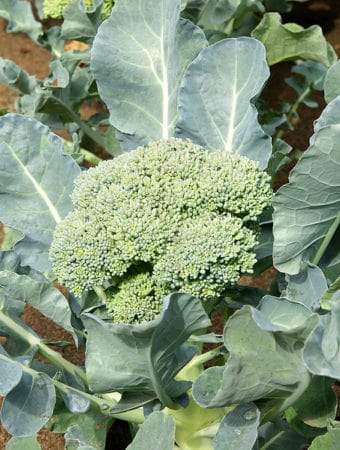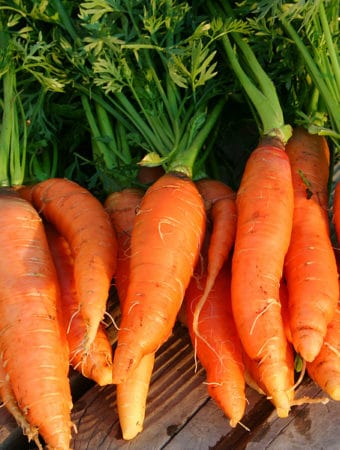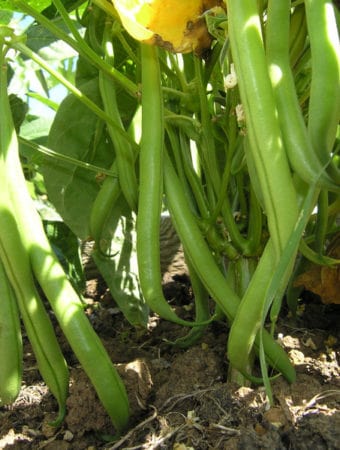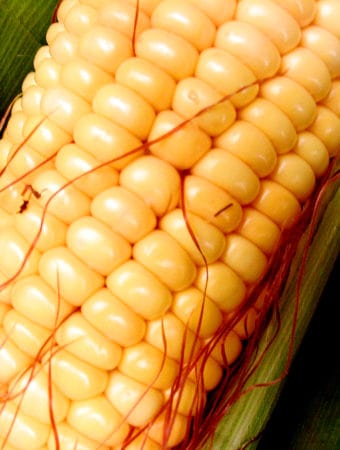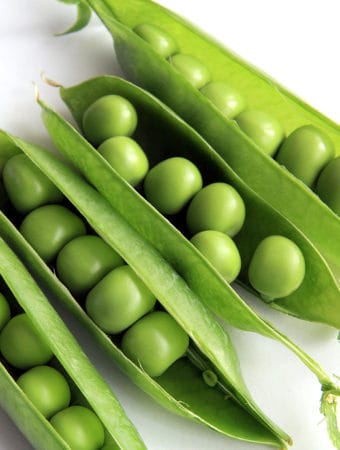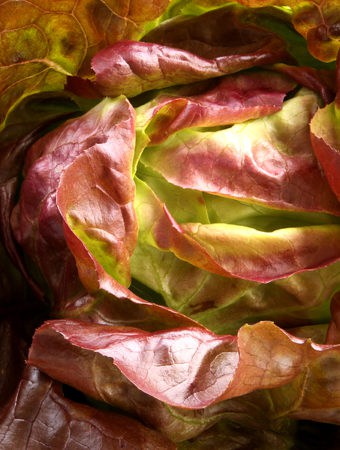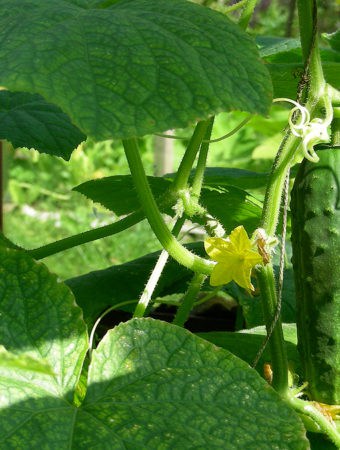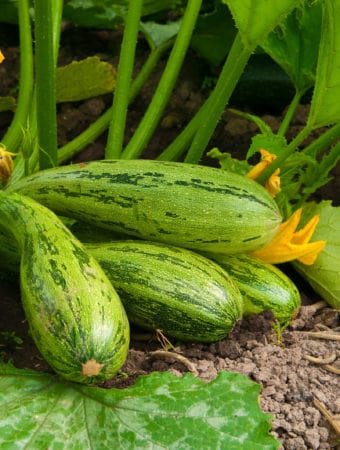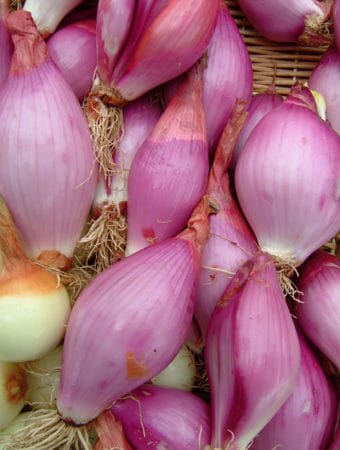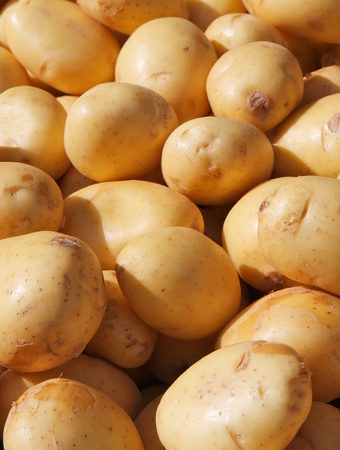Some say salsify has the subtle, sweet flavor of an oyster. Some say salsify has the flavor of asparagus or artichokes. Salsify is sometimes called “oyster plant”.
Salsify can be cooked in many of the same ways as carrots, parsnips, and potatoes. It can be steamed, baked, boiled, sautéed, or braised.

Salsify can come to harvest in early summer, but it is best during winter after it has been exposed to cold weather while still in the ground. Cold temperatures activate the conversion of starch into sugar and so salsify actually sweetens as the weather grows colder.
Kitchen Helpers from Amazon:
- Oster Vegetable Steamer
- Chef’s Knives Set of 6
- EZ Off Jar Opener for Weak Hands
- Pepper Core Remover Stainless Steel
- Kitchen Utensils – Set of 35
How to choose salsify
- Select salsify with well-formed roots that are heavy for their size and not too gnarled.
- Salsify should be firm to the touch.
- Medium-sized roots are less fibrous than larger roots.
- If you choose roots with their green shoot-like tops still attached, you will be better able to judge freshness.
How to store salsify
- Salsify is best consumed fresh.
- Salsify can be refrigerated in a perforated plastic bag for up to a week. Do not wash it before use.

How to prep salsify
- Salsify is difficult to clean and peel. Scrub the root under cold running water and then peel it after cooking. If you should chop or cut it before cooking, drop the cut pieces into acidulated water—such as lemon water– to prevent discoloration.
- If salsify is broken when it is pulled from the ground, it must be used at once or it will discolor and spoil.

Salsify cooking and serving suggestions
- Young salsify can be added raw to salads. It can be cooked unpeeled and cut into large pieces. After cooking, it is easy to remove the skin.
- Cook salsify until it is tender. Do not overcook it or will taste like mush. You can steam salsify for 10 to 15 minutes or boil it for 8 to 12 minutes.
- Cut salsify into short lengths and simmer for 20 to 30 minutes until tender. Drain well and sauté in butter or serve with lemon juice, melted butter, or chopped parsley.
- Salsify can be braised with veal, poultry, or fish, or it can be added to stews or baked au gratin, topped with a béchamel or cheese sauce. It can be baked or boiled or made into a cream soup.
- You can eat salsify cold dressed in a vinaigrette. Cook and cool and then serve in mustard or garlic vinaigrette with a simple salad.
- Goes well with potatoes, leeks, celery, onion, and spinach. Salsify has flavor affinity for bay leaf, butter, cream, hollandaise sauce, lemon, mushrooms, nutmeg, orange, and prosciutto.
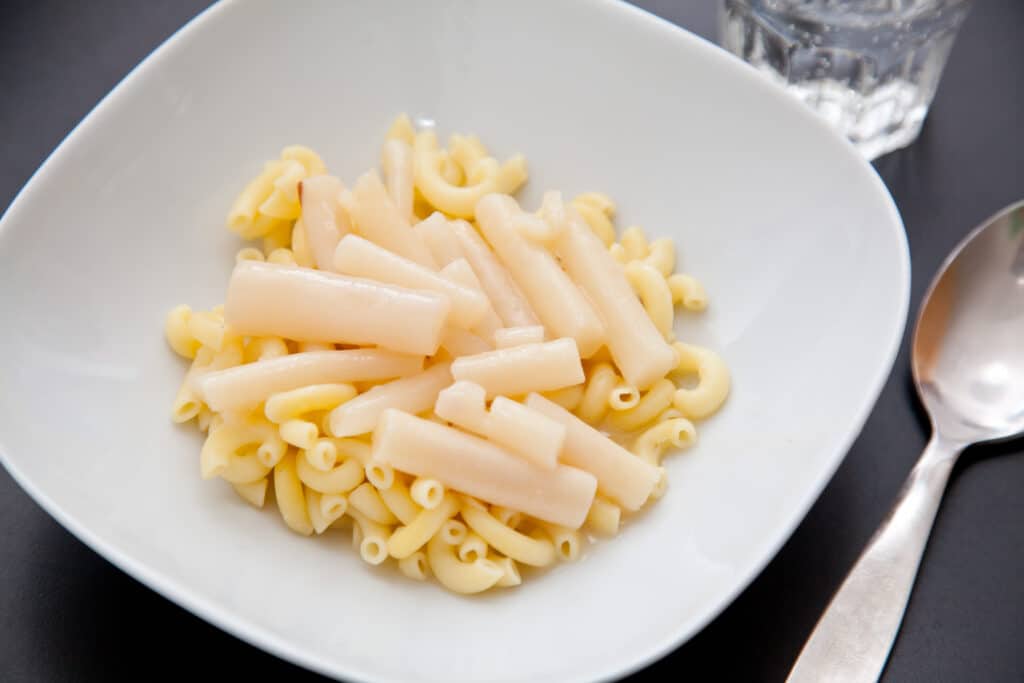
Ways to cook salsify
Salsify can be cooked whole or sliced crosswise into rings of equal thickness or lengthwise into halves. You can quarter or julienne strips of equal thickness. Thinner strips may be diced.
- Before frying or cooking salsify first parboil the roots for 5 to 10 minutes and then refresh them in cold water for 10 minutes before cooking further.
- Simmer salsify in a covered container until tender; whole roots will cook in 15 to 30 minutes, pieces in 5 to 15 minutes depending on size.
- Steaming whole salsify will take 20 to 40 minutes, pieces 5 to 10 minutes less.
- Sauté or stir-fry salsify without coating or batter for 10 to 15 minutes or until tender.
- Pan fry or deep fat fry salsify in a wet batter until the crust is golden brown.
- Salsify can be used in braises and casseroles; cook until they are tender, about 30 to 45 minutes.
How to boil salsify
- Scrub each salsify with a vegetable brush. Trim the ends.
- Cut roots into 1-inch pieces.
- Add 2 inches of water to a medium saucepan and bring to a boil. Add salsify.
- Cook salsify pieces for 10 minutes, or until they are fork-tender.
- Drain and serve hot.
How to mash salsify
- Boil 1-inch pieces (see above) and drain.
- Pour the boiled salsify pieces into a large bowl.
- Use a fork or potato masher to coarsely mash the pieces.
- Season with butter and cream just as you would mashed potatoes.
Boiled and mashed salsify can be blended into soups or stews. Mashed salsify will add creaminess and body to soups or stews in place of flour or cornstarch.
How to roast salsify
- Preheat the oven to 425 degrees F.
- Scrub the outer skin with a vegetable brush. Do not peel. Trim the ends.
- Cut salsify into pieces about 1 inch wide.
- Toss pieces with olive, salt, and pepper, or brown sugar, paprika, or chili powder.
- Arrange pieces on a baking sheet or ovenproof dish.
- Roast for 20 to 25 minutes, or until the largest pieces are fork-tender.
How to sauté salsify
- Heat olive oil in a medium skillet over medium-high heat.
- Scrub the outer skin with a vegetable brush. Do not peel. Trim the ends.
- Cut the salsify into three-quarter-inch pieces. Or, cut the roots into thin strips or matchsticks.
- Add salsify pieces to the skillet. (You can add herbs such as rosemary or thyme at the same time.)
- Cook for 5 to 10 minutes until pieces are fork-tender stirring every few minutes. Season with salt and pepper.
- Serve hot; drizzle with melted butter if you like.
Salsify nutrition
- Salsify is a good source of potassium, vitamins B and C, folic acid, magnesium, and phosphorus.
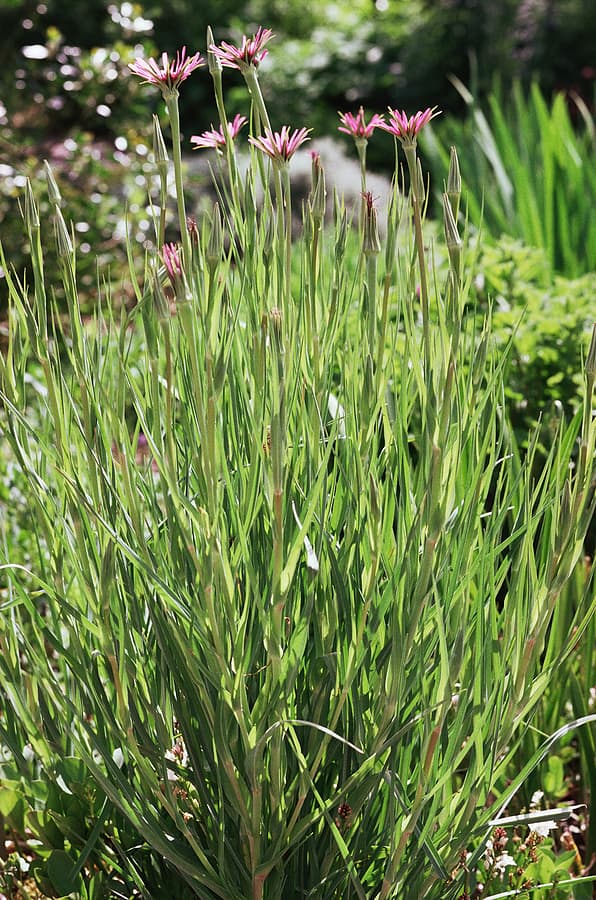
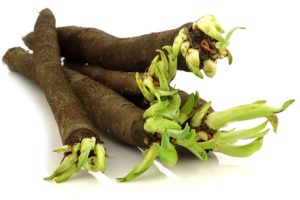
Get to know salsify
- Salsify is parsnip- or carrot-shaped with a grayish to golden skin and pearly white flesh. It commonly grows to 12 inches (30 cm) in length and about 2 inches (5 cm) in diameter. The salsify root is usually studded with rootlets and has shoot-like leaves reaching from its top.
- A relative of salsify with very similar features but black skin is scorzonera which is also sometimes called black salsify.
- Salsify is native to the eastern Mediterranean and has been in cultivation for at least 2,000 years. It was first mentioned in a thirteenth-century cookbook and became widely cultivated in Italy and France in the sixteenth century.
- Today salsify is mostly grown in Russia, France, and Italy.
The botanical name for salsify is Tragopogon porrifolius.
Related articles:
How to Plant, Grow, and Harvest Salsify and Scozonera
Five Ways to Cook and Service Salsify
Articles of interest:
Best Herbs for Container Growing
Garden Planning Books at Amazon:
- Vegetable Garden Almanac & Planner
- Kitchen Garden Grower’s Guide Vegetable Encyclopedia
- Vegetable Garden Grower’s Guide
- Tomato Grower’s Answer Book
More kitchen tips:
Bring your harvest to the table. Kitchen prep tips and easy recipes for the vegetables you grow. Click below for vegetable prep and recipes you can use now.
- Almonds
- Apples
- Apricot
- Aprium
- Artichoke
- Arugula
- Asparagus
- Avocado
- Bamboo Shoots
- Banana
- Basil
- Beans, Dried
- Beans. Long
- Beans, Shell
- Beans, Snap
- Beets
- Bitter Melon
- Blackberry
- Bok Choy
- Broccoli
- Broccoli Raab
- Brussels Sprouts
- Cabbage
- Cardoon
- Carrots
- Cauliflower
- Celeriac
- Celery
- Chard
- Chayote Squash
- Cherimoya
- Cherries
- Chestnut
- Chickpea
- Chinese Cabbage
- Chives
- Cilantro
- Citron
- Clementine
- Collards
- Coriander
- Corn, Sweet
- Corn, Baby
- Corn Salad, Mache
- Cranberry
- Cress
- Cucumber
- Daikon
- Dandelion
- Dill
- Eggplant
- Endive, Belgian
- Endive and Escarole
- Fava Beans
- Fig
- Florence Fennel
- Garlic
- Ginger
- Grapefruit
- Grapes
- Guava
- Horseradish
- Jerusalem Artichoke
- Jicama
- Jujube
- Kale
- Kiwifruit
- Kohlrabi
- Kumquat
- Leeks
- Lemongrass
- Lemons
- Lettuce
- Lime
- Mache (Corn Salad)
- Mandarin Orange
- Mango
- Maple Syrup
- Marjoram
- Melons
- Michihili
- Mint
- Mizuna
- Mushrooms
- Mushrooms, Cremini
- Mustard Greens
- Napa Cabbage
- Nectarine
- Okra
- Olives
- Olive oil
- Onions
- Oranges
- Oregano
- Parsley
- Parsley Root
- Parsnips
- Passion Fruit
- Pawpaw
- Peaches
- Pears
- Peas, Garden Snap
- Peas, Snow
- Pei Tsai
- Peppers, Chili
- Peppers, Sweet
- Persimmon
- Pineapple
- Pineapple Guava
- Plantain
- Plums
- Pluots
- Pomegranate
- Potatoes
- Prickly Pear
- Pumpkin
- Quince
- Radicchio
- Radishes
- Raspberries
- Rosemary
- Rhubarb
- Rutabaga
- Sage
- Salsify
- Sauerkraut
- Savory
- Shallots
- Sorrel
- Spinach
- Squash, Summer
- Squash, Winter
- Strawberries
- Sunchokes
- Sunflower
- Sweet Potato
- Swiss Chard
- Tangerine
- Taro
- Tarragon
- Thyme
- Tomatillo
- Tomato
- Turnip
- Turnip Greens
- Yams



